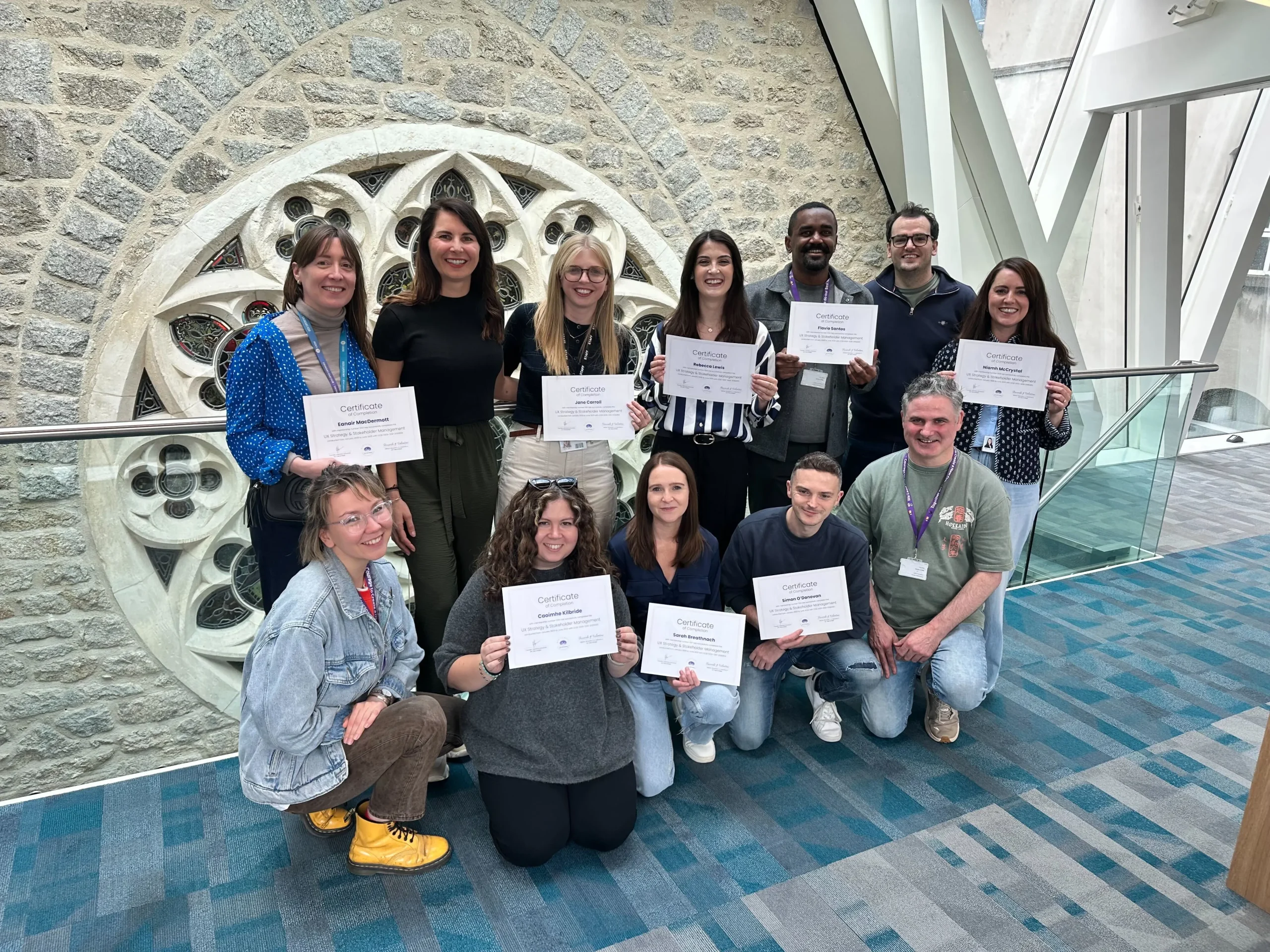Building Strategic Foundations for UX at VHI

Client: Vhi Healthcare UX Team (Design & Research)
Location: Vhi Healthcare in Abbey Street, Dublin, Ireland
Facilitators: Valentina Antunovic & Riccardo Spina, UX Tree
At UX Tree, our mission is to help design teams move beyond day-to-day execution and start working strategically. Recently, we partnered with the UX Research and Design team at VHI Healthcare to run our UX Strategy Program.
Together, we explored what it means to think and act strategically, how to connect design decisions to business outcomes, and how to collaborate more effectively with cross-functional partners.
Moving from Tactical to Strategic UX
We started the program by looking at the difference between tactical UX and strategic UX. While tactical work focuses on solving immediate design problems, strategic UX asks us to step back and align design with wider business goals and customer outcomes.
This shift in perspective helped us frame the rest of the program — reminding us that every design decision has a place in the bigger picture.
Measuring the Value of UX
One of the biggest questions for any UX team is: How do we show the value of our work?
To dig into this, we teamed up with VHI’s data analysts and mapped the customer journey across six stages: Adoption, Effectiveness, Efficiency, Engagement, Revenue, and Satisfaction.
For each stage, we brainstormed different ways to measure impact — from adoption rates and task success to engagement levels and long-term satisfaction. The exercise showed us that measurement looks different depending on where the customer is in their journey, and that UX can influence value at every stage.
This work also gave us a chance to connect with the analytics team, strengthening collaboration and creating a shared language for impact.
Creating UX Values and Principles
A strategy isn’t just about frameworks — it’s about having guiding principles that shape decisions.
Together, we took VHI’s core organisational values and translated them into a set of UX-specific design values and principles. These became our guiding star for the future: a way to make sure every design choice reflects both user needs and the wider mission of VHI.
Having these principles in place means we can always ground our work in shared purpose, even when making tough trade-offs.
Putting Strategy into Practice
Toward the end of the program, we rolled up our sleeves and worked in smaller groups to apply what we’d learned.
We created:
-
Experience maps to capture the full customer journey.
-
Content model maps to structure and prioritise information.
-
Compiled Task Analyses to break down how people complete key tasks and where improvements could add value.
These exercises helped us practice sizing and prioritising work, making sure that what we design has clear business and customer impact.
Learning Through Role-Play
To build empathy for our cross-functional partners, we also experimented with role-playing exercises. Some of us stepped into the shoes of developers, business analysts, and other stakeholders.
This made it easier to understand the challenges others face and how our conversations could be more effective. It was a fun but powerful reminder that collaboration is at the heart of successful design work.
What We Took Away
By the end of the program, we had:
-
A shared understanding of what UX strategy really means.
-
A clearer way to connect design efforts with measurable outcomes.
-
New UX values and principles aligned with VHI’s organisational values.
-
Practical experience mapping journeys, content, and tasks strategically.
-
Stronger collaboration and empathy across teams.
Most importantly, we left with the mindset that UX is not just about solving problems — it’s about shaping outcomes, driving value, and making sure our work always ties back to the business.
This program was a great reminder that when we step back from the day-to-day and take a more strategic approach, we can create more meaningful impact.
Working with VHI’s UX Design and Research team showed us how powerful it is to combine strategy, values, and collaboration into everyday practice. We’re excited to see how this foundation will guide their work going forward — and proud that UX Tree could be part of the journey.
👉 If your team is ready to unlock the business value of design, our UX Strategy Program can help you get there.
Valentina
Valentina is the founder of UX Tree and a Design Manager at Vhi, bringing over a decade of hands-on UX experience. She holds a master’s degree in User Experience from IADT and is passionate about mentoring emerging designers, with a strong focus on strategic thinking and crafting intuitive user interfaces.